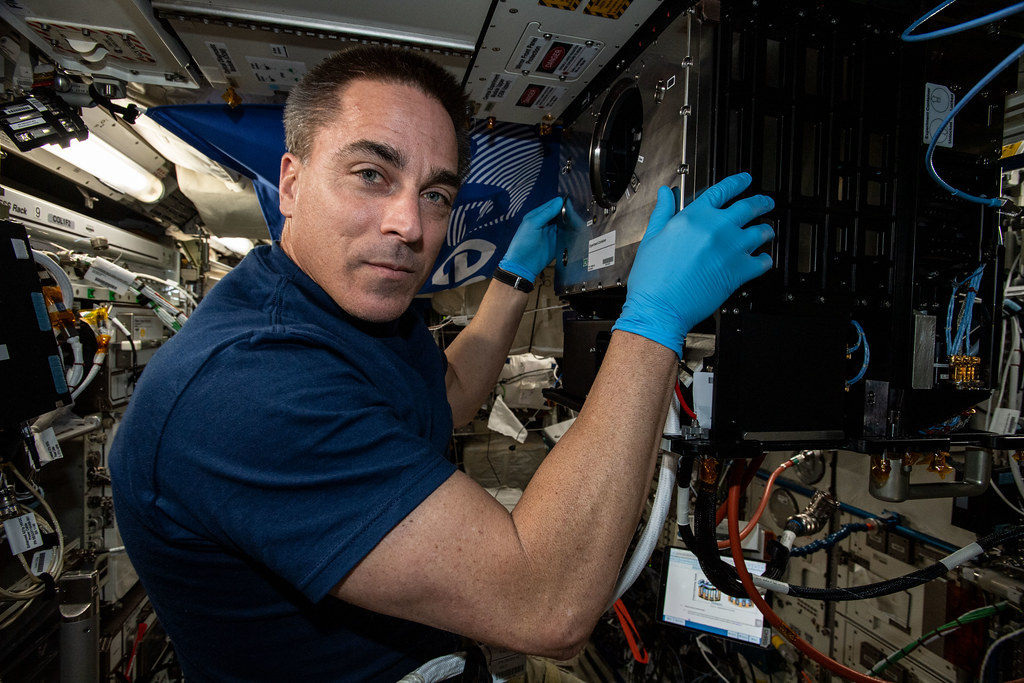One Piece Flow is a Lean Manufacturing concept that involves producing one piece at a time, in sequence, without interruption or delay.
It is a critical component of Lean Manufacturing because it minimizes waste, reduces lead times, and improves quality by identifying and correcting defects immediately.
The importance of One Piece Flow in Lean Manufacturing cannot be overstated. It is a fundamental principle that underpins many Lean Manufacturing techniques, such as Just-In-Time (JIT) production, Total Productive Maintenance (TPM), and Kaizen.
By implementing One Piece Flow, organizations can reduce costs, improve efficiency, and increase customer satisfaction.
However, despite its many benefits, One Piece Flow is not a panacea.
There are several reasons why it may not work in certain manufacturing environments, and it is essential to be aware of these potential barriers to successful implementation.
The purpose of this blog is to examine 12 reasons why One Piece Flow may not work and provide insights into how to overcome these challenges.
By understanding these barriers and finding solutions to them, organizations can maximize the benefits of Lean Manufacturing and continuous improvement.
Table of Contents
12 Reasons why One Piece Flow may not work
#1 High variability in the process
Variability in manufacturing refers to the natural variation that occurs in production processes due to factors such as machine performance, material quality, operator skill, and environmental conditions. Variability can lead to defects, waste, and delays, and it can be challenging to control.
High variability makes One Piece Flow difficult to implement because it requires a consistent flow of products through the production process. One Piece Flow depends on every step in the process being completed at the same pace, with the same quality, and without any interruptions or delays. High variability in any part of the process can disrupt the flow, causing bottlenecks, overproduction, or defects. This can result in increased lead times, reduced productivity, and decreased quality.
For example, if a machine frequently breaks down, it can cause a bottleneck in the production line, which can delay the entire process. Similarly, if the quality of the raw materials is inconsistent, it can lead to defects and rework, which can slow down the production line.
To overcome the challenge of high variability, organizations must first identify the sources of variability and implement measures to reduce or control them. This can include standardizing processes, improving machine maintenance, providing employee training, and implementing quality control measures. By reducing variability, organizations can improve the consistency of their production processes, making One Piece Flow more feasible and effective.
#2 Insufficient employee training
Employee training is a critical component of Lean Manufacturing. It is essential to ensure that employees have the necessary skills, knowledge, and understanding of the Lean principles and techniques required to implement them effectively. Insufficient employee training can hinder the success of One Piece Flow in several ways.
First, without proper training, employees may not understand the importance of One Piece Flow or the specific steps required to implement it. This can lead to resistance or reluctance to change and can result in poor execution and a lack of commitment to the process.
Second, insufficient training can result in poor-quality products and increased defects, which can lead to rework, waste, and delays. One Piece Flow requires every step in the process to be completed correctly, consistently, and in sequence. Without the necessary training, employees may not have the skills or knowledge to perform their tasks to the required standard.
Third, insufficient training can result in low employee engagement and morale. Employees who are not adequately trained may feel overwhelmed, frustrated, or disengaged, leading to decreased productivity, increased absenteeism, and higher turnover rates.
To overcome the challenge of insufficient employee training, organizations must prioritize employee training and provide ongoing support and education. This can include providing classroom and hands-on training, mentoring, and coaching, and ensuring that employees have the necessary resources and tools to perform their tasks effectively. By investing in employee training, organizations can increase employee engagement and productivity, reduce defects and waste, and improve the success of One Piece Flow.
#3 Equipment breakdowns
Equipment breakdowns can significantly disrupt One Piece Flow. One of the key principles of One Piece Flow is to produce one piece at a time without interruption or delay. However, when equipment breaks down, it can cause delays, stoppages, and even lead to overproduction.
Equipment breakdowns can disrupt the production process in several ways. They can cause bottlenecks and delays, leading to decreased productivity and increased lead times. Additionally, they can result in defects and rework, leading to wasted time and materials. Finally, equipment breakdowns can cause overproduction, where excess inventory is produced to compensate for the lost production time, leading to increased costs and reduced efficiency.
To overcome the challenge of equipment breakdowns, organizations must prioritize equipment maintenance as a critical component of Lean Manufacturing. Maintenance ensures that equipment is running at peak performance, reducing the likelihood of breakdowns and increasing efficiency. It can also identify potential issues before they become major problems, reducing downtime and minimizing the impact on production.
Additionally, organizations can implement Total Productive Maintenance (TPM) techniques to improve equipment reliability and availability. TPM involves regular equipment inspections, preventive maintenance, and employee training to ensure that equipment is functioning correctly and efficiently.
By prioritizing equipment maintenance and implementing TPM techniques, organizations can reduce the likelihood of equipment breakdowns, increase efficiency and productivity, and improve the success of One Piece Flow.
#4 Lack of communication between employees
Communication is critical in Lean Manufacturing, and poor communication can significantly affect the success of One Piece Flow. One Piece Flow requires a seamless flow of products through the production process, with every step completed correctly and in sequence. This requires clear and effective communication between employees.
Poor communication can lead to a lack of coordination between employees, resulting in delays, errors, and wasted time and materials. For example, if one employee is not aware of changes made by another employee, they may continue to work on an outdated process or product design, resulting in wasted time and materials. This can cause delays, overproduction, and defects, all of which can disrupt the One Piece Flow process.
Effective communication is essential to ensuring that every employee understands their role in the production process and can work collaboratively to achieve the desired outcomes. This includes clear and concise instructions, feedback, and the ability to raise concerns or suggest improvements.
To overcome the challenge of poor communication, organizations must prioritize communication as a critical component of Lean Manufacturing. This can include regular team meetings, daily huddles, and visual management tools to improve communication and collaboration between employees. Additionally, organizations can implement standardized work procedures to ensure that every employee understands their role in the production process and has clear expectations for their work.
By prioritizing communication and collaboration between employees, organizations can improve the success of One Piece Flow, reduce delays and defects, and increase productivity and efficiency.
#5 Inadequate process design
Process design is a critical component of Lean Manufacturing, and inadequate process design can make One Piece Flow difficult to implement. One Piece Flow requires a streamlined and efficient production process that minimizes waste and maximizes efficiency. Poor process design can lead to delays, defects, and wasted time and materials.
Inadequate process design can make One Piece Flow difficult to implement in several ways. First, it can result in process steps that are not properly sequenced or coordinated, leading to bottlenecks and delays. For example, if one step in the production process requires longer than the other steps, it can lead to a backlog of products waiting to be processed, disrupting the One Piece Flow process.
Second, inadequate process design can result in non-value-added steps that add time and complexity to the production process. These steps can increase lead times and reduce efficiency, making it challenging to implement One Piece Flow effectively.
Finally, inadequate process design can result in poor-quality products and increased defects, leading to rework, waste, and delays. One Piece Flow requires every step in the process to be completed correctly and consistently, and poor process design can make it challenging to achieve this standard.
To overcome the challenge of inadequate process design, organizations must prioritize process design as a critical component of Lean Manufacturing. This includes identifying and eliminating non-value-added steps, optimizing the sequence of process steps, and ensuring that every step in the process is properly coordinated and executed.
By prioritizing process design, organizations can reduce lead times, improve quality, and increase efficiency, making it easier to implement One Piece Flow effectively.
#6 Low volume production
Low volume production refers to a manufacturing process that produces a low volume of products. One Piece Flow may not be practical in low volume production due to several factors.
First, the setup time required for each product may be relatively long compared to the production time, making it difficult to implement One Piece Flow. One Piece Flow requires a continuous flow of products through the production process, and setup times can disrupt this flow, leading to delays and inefficiencies.
Second, the cost of implementing One Piece Flow in a low volume production environment may be prohibitively high. One Piece Flow requires a significant investment in equipment and processes to ensure that every step in the production process is properly sequenced and coordinated. For low volume production, the return on investment may not justify the cost of implementing One Piece Flow.
Finally, the variability of the production process in low volume production can make it challenging to implement One Piece Flow. One Piece Flow requires a consistent and predictable production process, and variability can lead to delays, overproduction, and defects.
While One Piece Flow may not be practical in low volume production, organizations can still implement Lean Manufacturing principles to improve efficiency and reduce waste. This can include implementing standardized work procedures, optimizing the flow of materials and information, and implementing Total Productive Maintenance techniques to improve equipment reliability and availability.
By prioritizing Lean Manufacturing principles in low volume production, organizations can improve efficiency and reduce waste, even if One Piece Flow is not practical.
#7 Overproduction
Overproduction is a common problem in manufacturing, where more products are produced than are needed to meet customer demand or fill inventory. Overproduction can have a negative impact on One Piece Flow in several ways.
First, overproduction can lead to excess inventory, which can disrupt the flow of products through the production process. One Piece Flow requires a seamless flow of products from one step in the process to the next, and excess inventory can lead to bottlenecks and delays.
Second, overproduction can lead to a backlog of products waiting to be processed, which can disrupt the One Piece Flow process. When products are produced faster than they can be processed, it can lead to a buildup of work in progress, which can slow down the entire production process.
Finally, overproduction can lead to waste and increased costs. Producing more products than are needed can result in excess materials, energy, and labor costs, which can negatively impact the profitability of the organization.
To overcome the challenge of overproduction in One Piece Flow, organizations must prioritize balancing the flow of products with customer demand. This can include implementing pull systems, where production is based on customer demand, rather than push systems, where production is based on a predetermined schedule.
Additionally, organizations can implement visual management tools, such as kanban, to help control inventory levels and prevent overproduction. By prioritizing balancing the flow of products with customer demand, organizations can reduce waste and improve the efficiency of One Piece Flow.
#8 Lack of standardization
Standardization is a critical element of Lean Manufacturing, as it ensures that all employees are following the same process and using the same tools and techniques. Lack of standardization can make One Piece Flow difficult to implement in several ways.
First, without standardized work procedures, it can be challenging to ensure that each step in the production process is performed consistently and efficiently. One Piece Flow requires a consistent and predictable production process, and lack of standardization can lead to variability and delays.
Second, lack of standardization can make it difficult to identify and resolve problems in the production process. One Piece Flow requires a continuous improvement mindset, and standardized work procedures provide a foundation for identifying and addressing issues in the production process.
Finally, lack of standardization can make it challenging to train new employees and maintain a high level of productivity. One Piece Flow requires a highly skilled and motivated workforce, and standardized work procedures can help ensure that employees are trained and performing at a high level.
To overcome the challenge of lack of standardization in One Piece Flow, organizations must prioritize the development and implementation of standardized work procedures. This can include creating detailed work instructions, developing training programs, and establishing a culture of continuous improvement.
By prioritizing standardization in One Piece Flow, organizations can improve consistency and predictability in the production process, identify and address issues more efficiently, and develop a highly skilled and motivated workforce.
#9 Limited resources
Limited resources refer to situations where an organization has a finite amount of resources, such as materials, labor, or equipment, available to produce goods or services. Limited resources can affect One Piece Flow in several ways.
First, limited resources can lead to bottlenecks in the production process, which can disrupt the flow of products and make it challenging to implement One Piece Flow. For example, if there are not enough machines to process products, it can lead to delays and an inefficient production process.
Second, limited resources can make it difficult to balance the flow of products with customer demand. One Piece Flow requires a production process that is synchronized with customer demand, and limited resources can make it challenging to achieve this balance.
Finally, limited resources can lead to a lack of flexibility in the production process. One Piece Flow requires the ability to quickly adapt to changes in customer demand or production requirements, and limited resources can make it challenging to respond effectively.
To overcome the challenge of limited resources in One Piece Flow, organizations must prioritize resource allocation and management. This can include implementing visual management tools, such as kanban, to help control inventory levels and prevent overproduction, and implementing a pull system, where production is based on customer demand, rather than a predetermined schedule.
Additionally, organizations can prioritize continuous improvement to identify and eliminate waste in the production process, which can help optimize the use of limited resources. By effectively managing limited resources and prioritizing continuous improvement, organizations can improve the efficiency of One Piece Flow and maximize the use of available resources.
# 10 Complex products
Complex products are products that require a high degree of customization, involve multiple processes, and require specialized skills and equipment to manufacture. One Piece Flow may not be suitable for complex products for several reasons.
First, complex products may require significant set-up time, which can make it challenging to implement One Piece Flow. One Piece Flow requires a continuous flow of products without interruption, and frequent set-up changes can disrupt the flow and lead to delays.
Second, complex products may require specialized skills and equipment to manufacture, which can make it challenging to implement One Piece Flow. One Piece Flow requires a standardized production process that is easily repeatable, and the complexity of certain products may make this difficult to achieve.
Finally, complex products may involve multiple processes, which can make it challenging to achieve a continuous flow of products. One Piece Flow requires a sequential flow of products from one process to the next, and complex products may require multiple iterations through the production process.
To overcome the challenge of complex products in One Piece Flow, organizations may need to consider alternative production methodologies, such as batch production, that are better suited to the nature of the products. Additionally, organizations may need to prioritize standardization and process improvement to reduce the complexity of the production process and improve efficiency.
However, it’s important to note that complex products may still benefit from the principles of Lean Manufacturing, such as minimizing waste, continuous improvement, and a focus on customer value. Ultimately, the suitability of One Piece Flow for complex products depends on the specific nature of the products and the production process.
#11 High demand variability
High demand variability refers to situations where customer demand for a product is highly unpredictable, leading to frequent changes in the production schedule. High demand variability can affect One Piece Flow in several ways.
First, high demand variability can lead to overproduction, as manufacturers may produce more products than required to meet fluctuating demand. Overproduction can lead to excess inventory, which can disrupt the flow of products and make it challenging to implement One Piece Flow.
Second, high demand variability can lead to underproduction, as manufacturers may struggle to keep up with sudden increases in demand. This can lead to delays and backlogs, which can disrupt the flow of products and make it challenging to achieve a continuous flow of products.
Finally, high demand variability can make it challenging to synchronize the production process with customer demand. One Piece Flow requires a production process that is synchronized with customer demand, and high demand variability can make it challenging to achieve this balance.
To overcome the challenge of high demand variability in One Piece Flow, organizations can implement a pull system, where production is based on customer demand, rather than a predetermined schedule. This can help manufacturers adjust production to meet fluctuations in demand and reduce the risk of overproduction or underproduction.
Additionally, organizations can prioritize continuous improvement to identify and eliminate waste in the production process, which can help optimize the use of available resources and improve efficiency. By effectively managing demand variability and prioritizing continuous improvement, organizations can improve the efficiency of One Piece Flow and maximize the use of available resources.
#12 Resistance to change
Change management is an important aspect of Lean Manufacturing, as it involves managing the human element of implementing new processes and methodologies. Resistance to change can hinder the success of One Piece Flow in several ways.
First, resistance to change can lead to a lack of engagement and participation from employees, which can make it challenging to implement One Piece Flow successfully. Employees may feel unsure or uncomfortable with new processes and may be resistant to change, which can affect their motivation and willingness to participate.
Second, resistance to change can lead to a lack of buy-in from management, which can make it challenging to secure the necessary resources and support for One Piece Flow. Management may be hesitant to invest in new processes and methodologies if they do not see the value or believe in the benefits, which can hinder the success of One Piece Flow.
Finally, resistance to change can lead to a lack of commitment from the organization as a whole, which can make it challenging to sustain the benefits of One Piece Flow over the long term. Organizations that are resistant to change may be less likely to prioritize continuous improvement or invest in the necessary resources to maintain the effectiveness of One Piece Flow.
To overcome resistance to change in One Piece Flow, organizations can implement a structured change management process that focuses on communication, education, and engagement. This may include providing training and support for employees, involving them in the process of implementing One Piece Flow, and communicating the benefits and value of the new processes and methodologies.
Additionally, organizations can prioritize a culture of continuous improvement, where employees are encouraged to provide feedback and suggestions for improving processes and methodologies. By prioritizing change management and creating a culture of continuous improvement, organizations can overcome resistance to change and successfully implement One Piece Flow.
Conclusion
In conclusion, One Piece Flow is a valuable methodology for improving efficiency and reducing waste in manufacturing. However, there are several reasons why it may not work in certain situations. These include high variability in the process, insufficient employee training, equipment breakdowns, lack of communication between employees, inadequate process design, low volume production, overproduction, lack of standardization, limited resources, complex products, high demand variability, and resistance to change.
It is important to identify potential barriers to successful implementation of One Piece Flow in order to develop effective strategies to overcome these challenges. Organizations can prioritize change management, continuous improvement, and a culture of collaboration and communication to improve the likelihood of success in implementing One Piece Flow.
Overall, Lean Manufacturing is a powerful approach to improving efficiency and reducing waste in manufacturing. By prioritizing continuous improvement and adapting to changing circumstances, organizations can optimize their processes and improve their competitiveness in the market.




